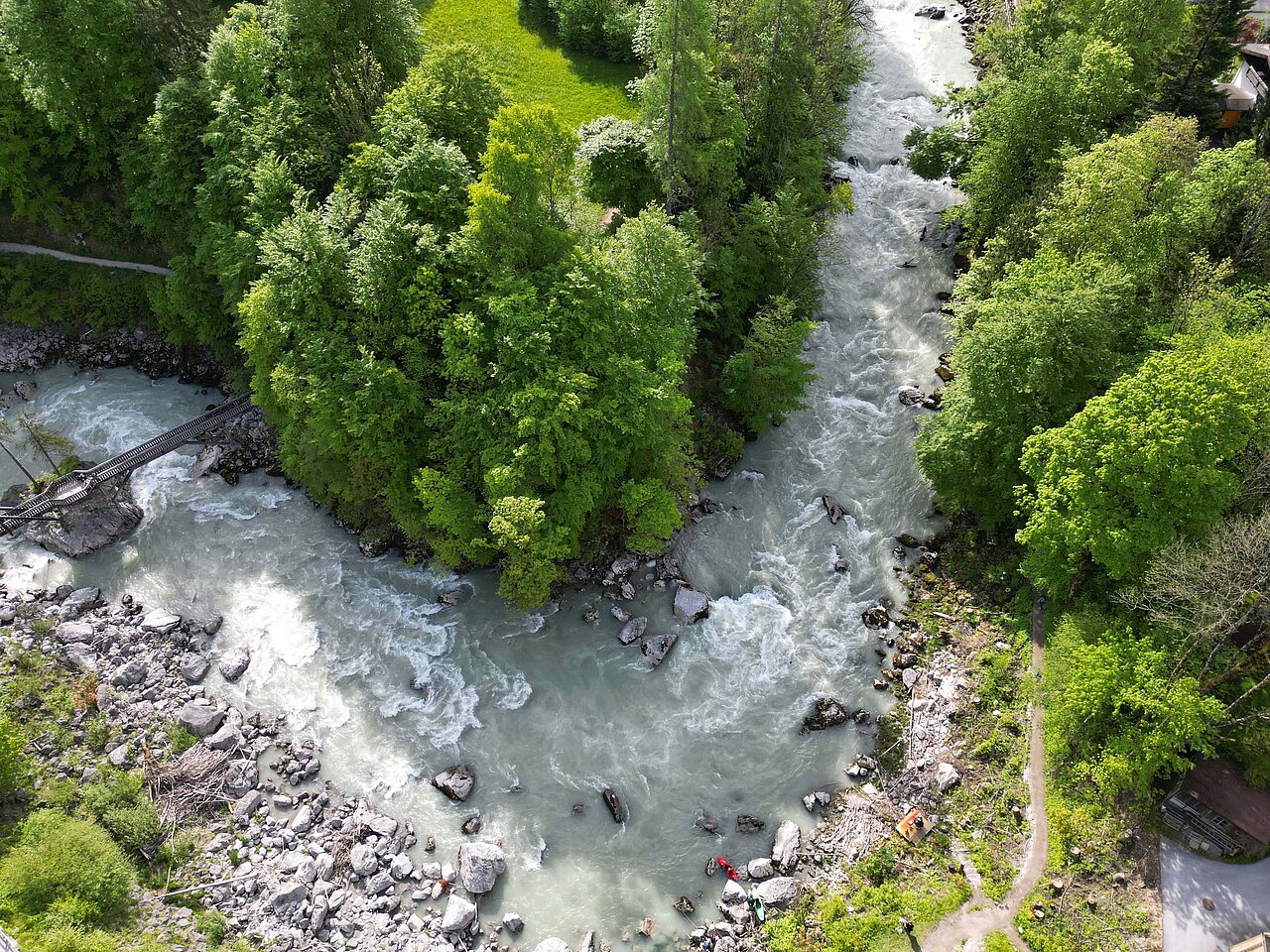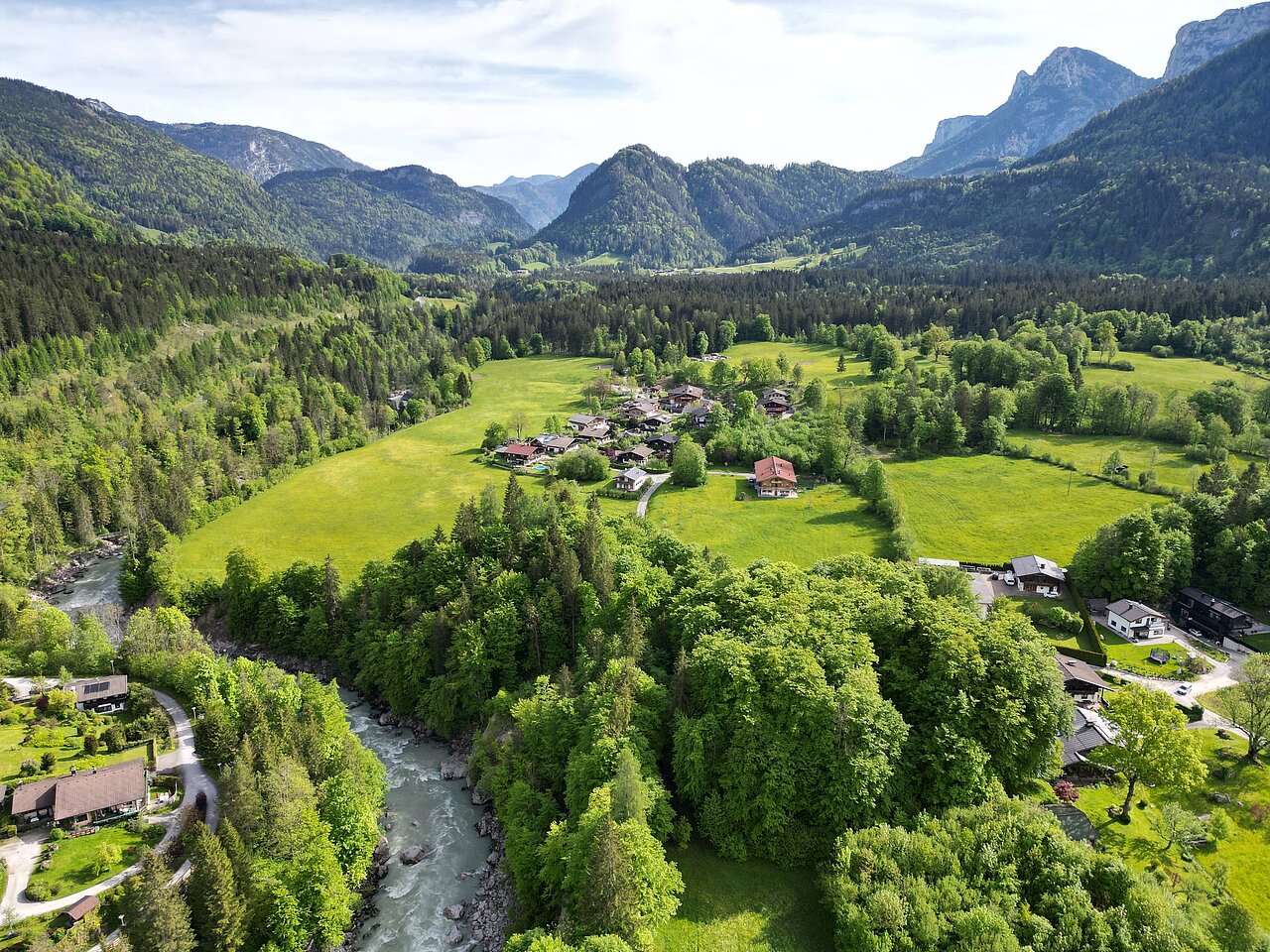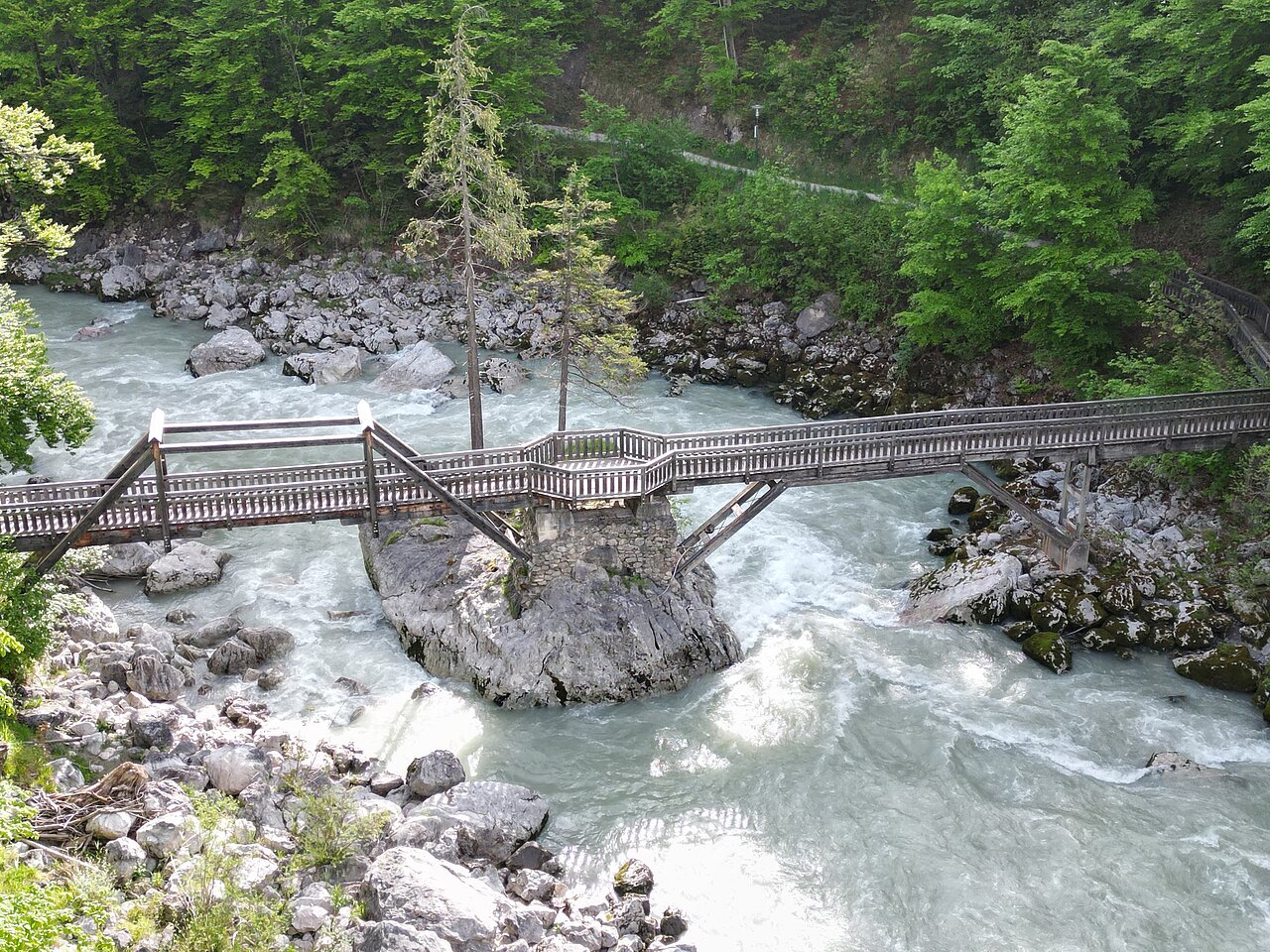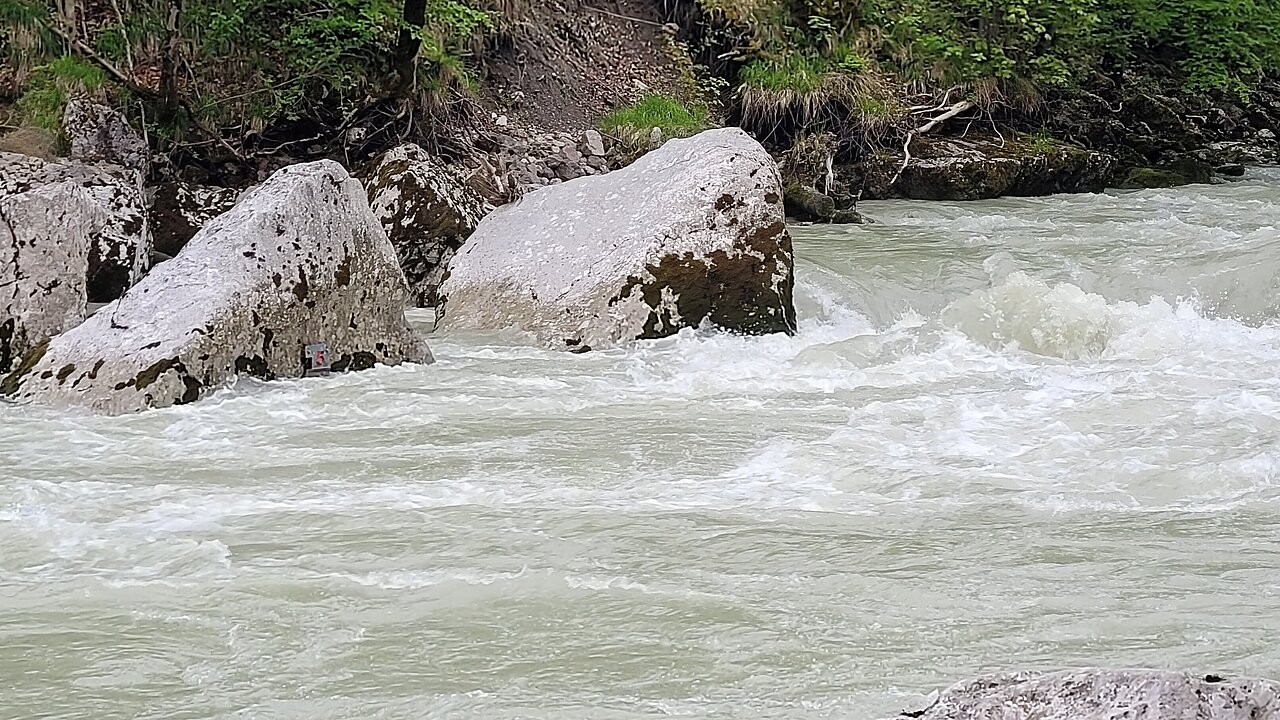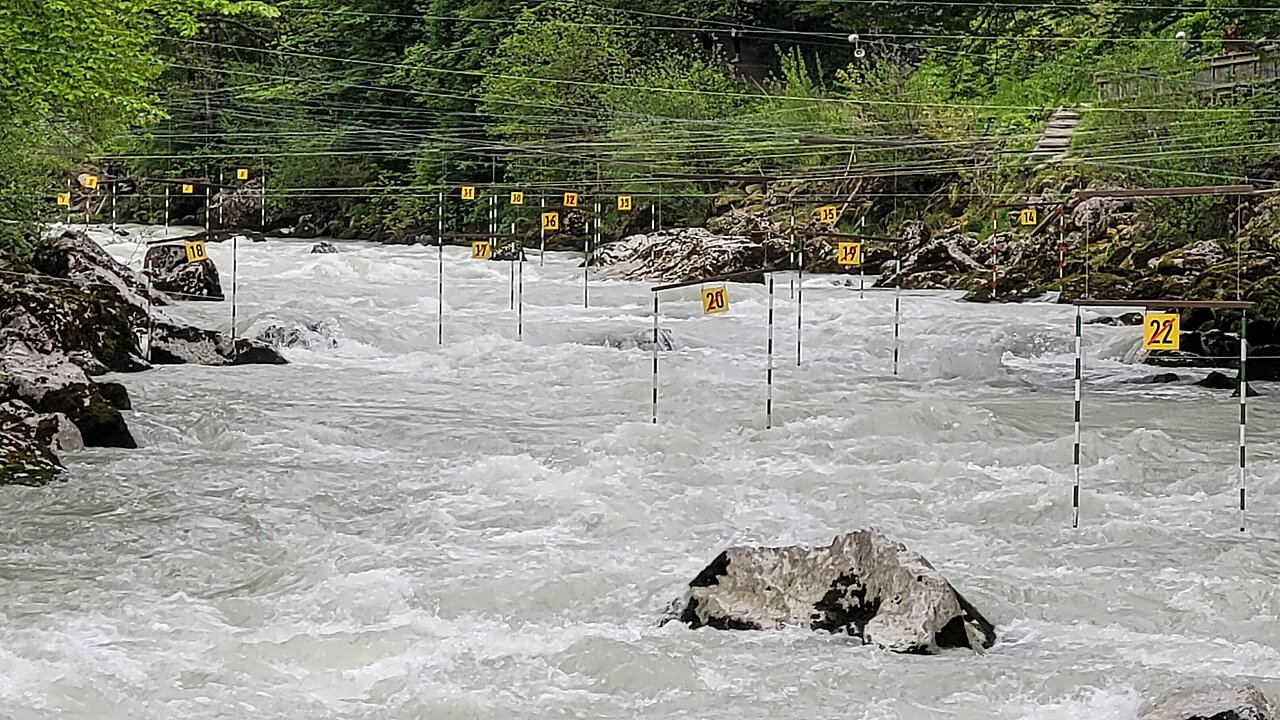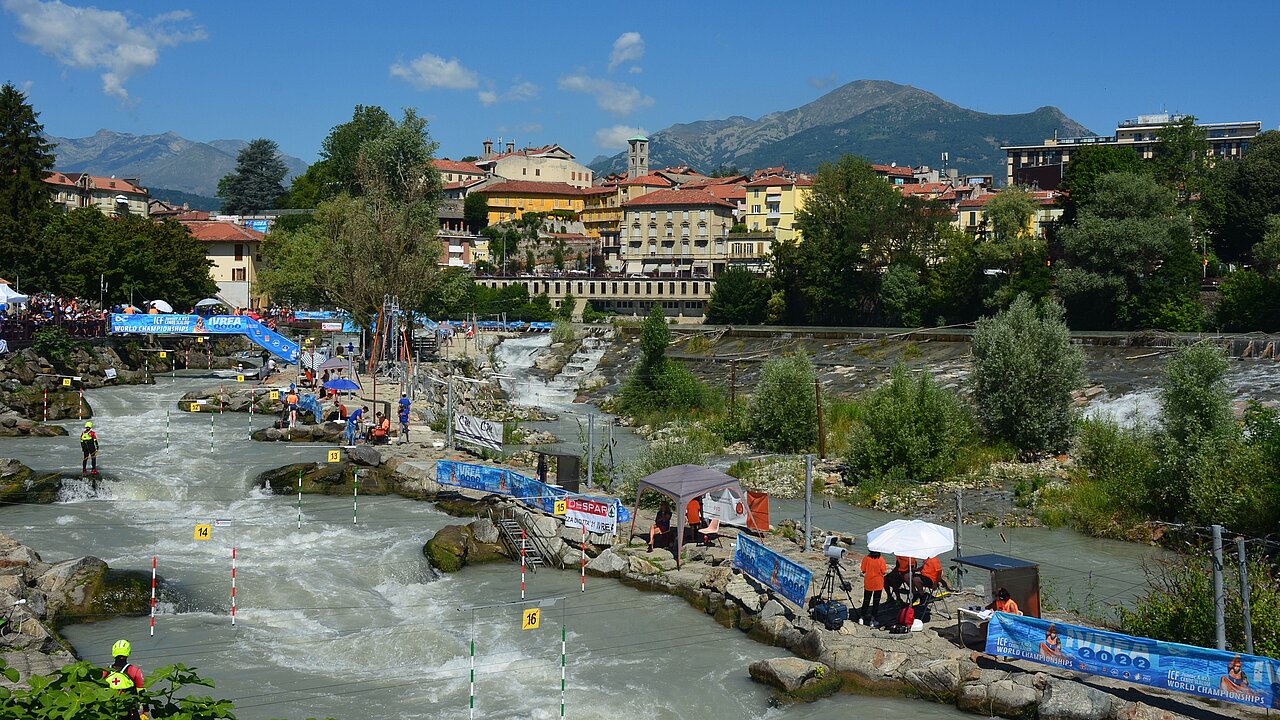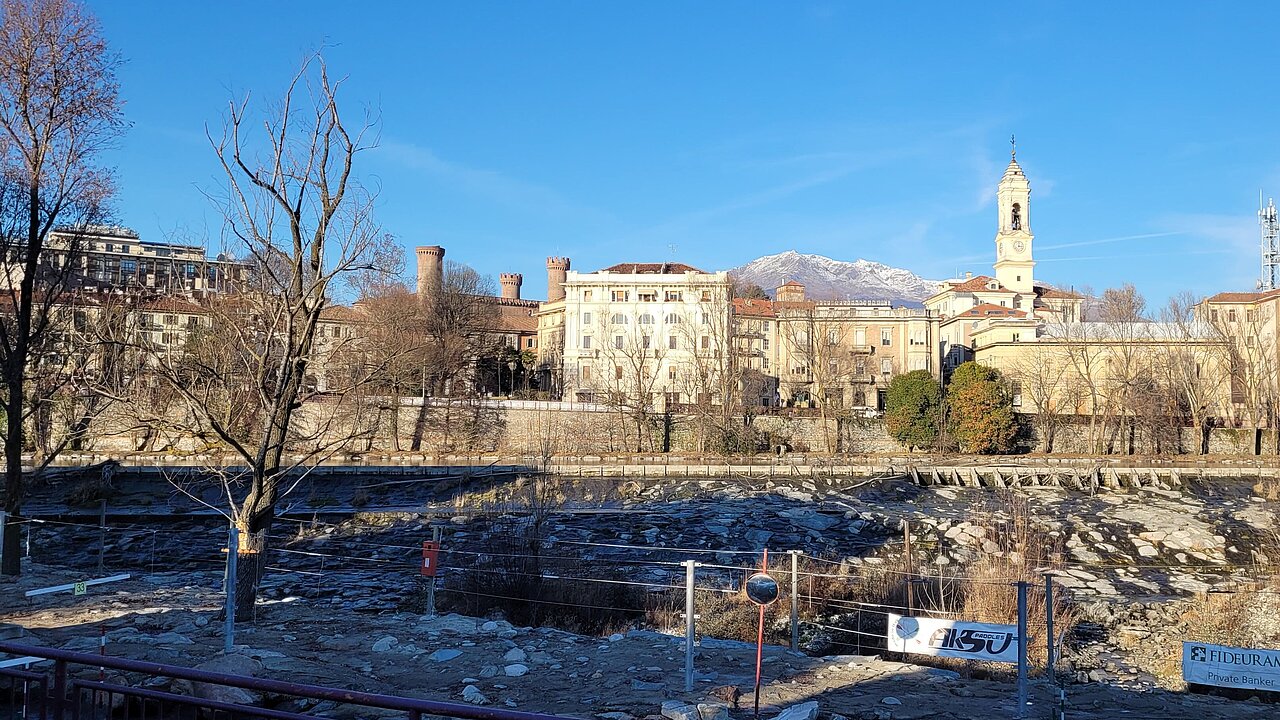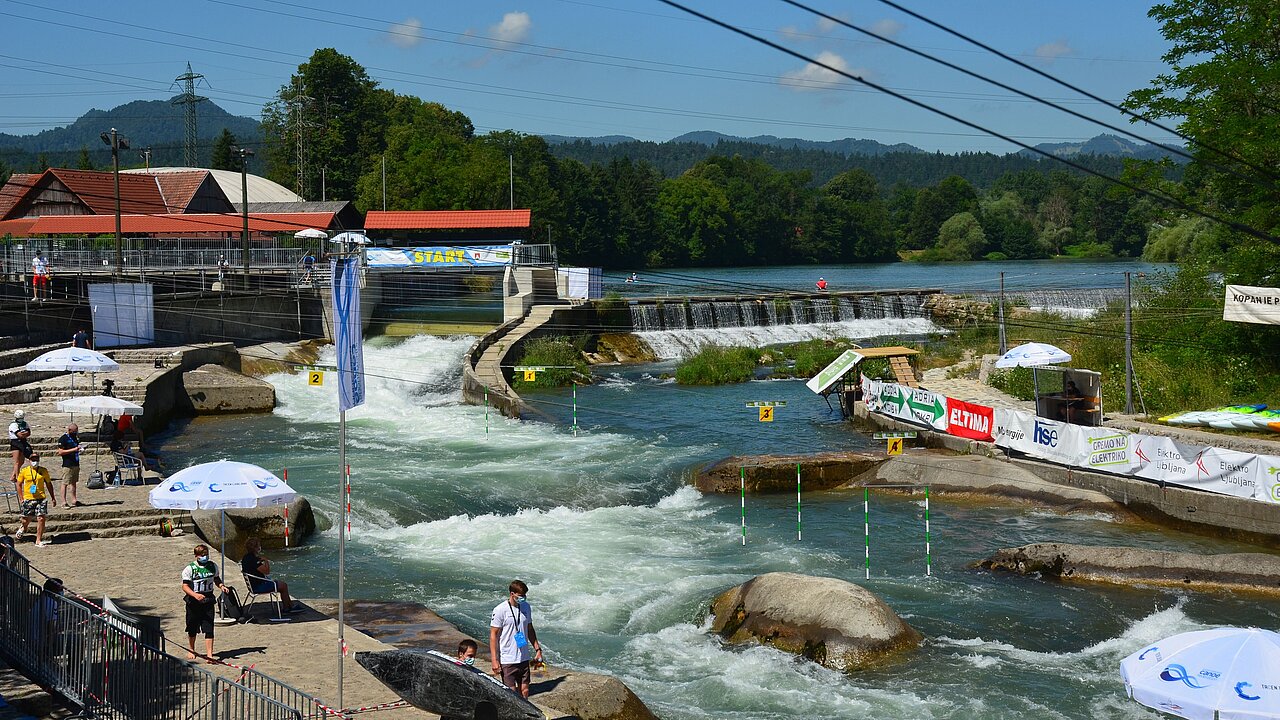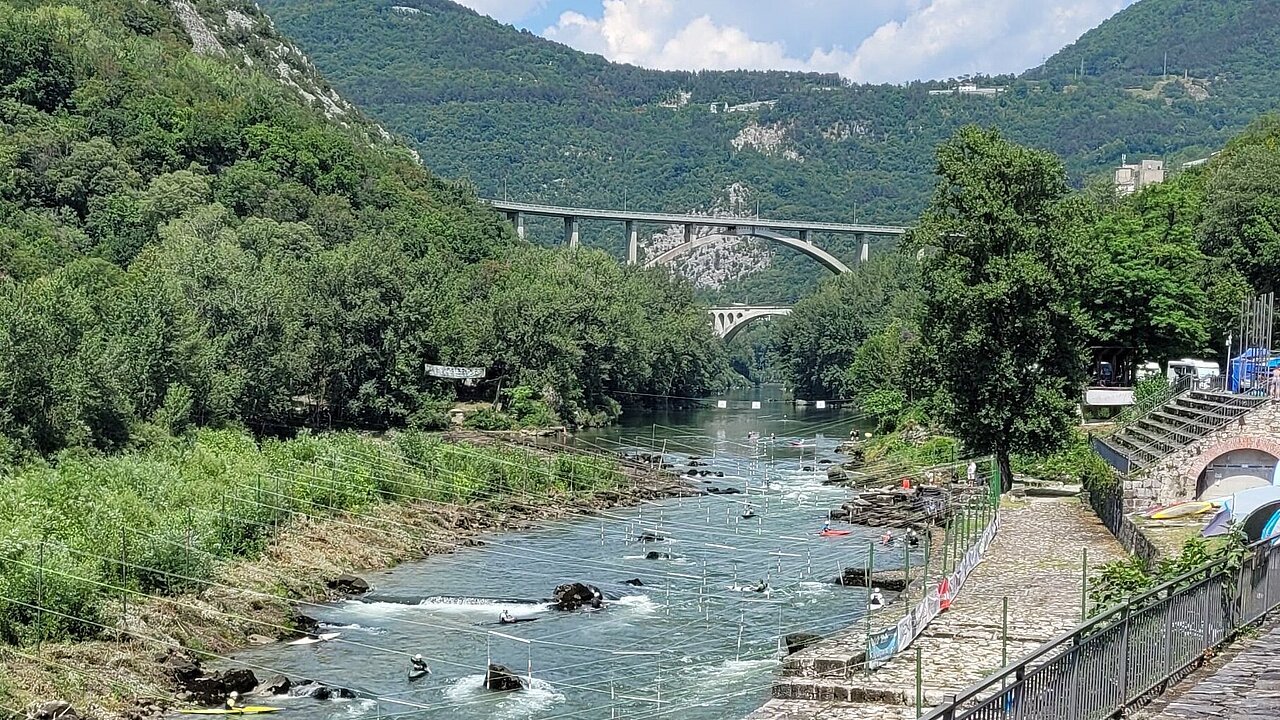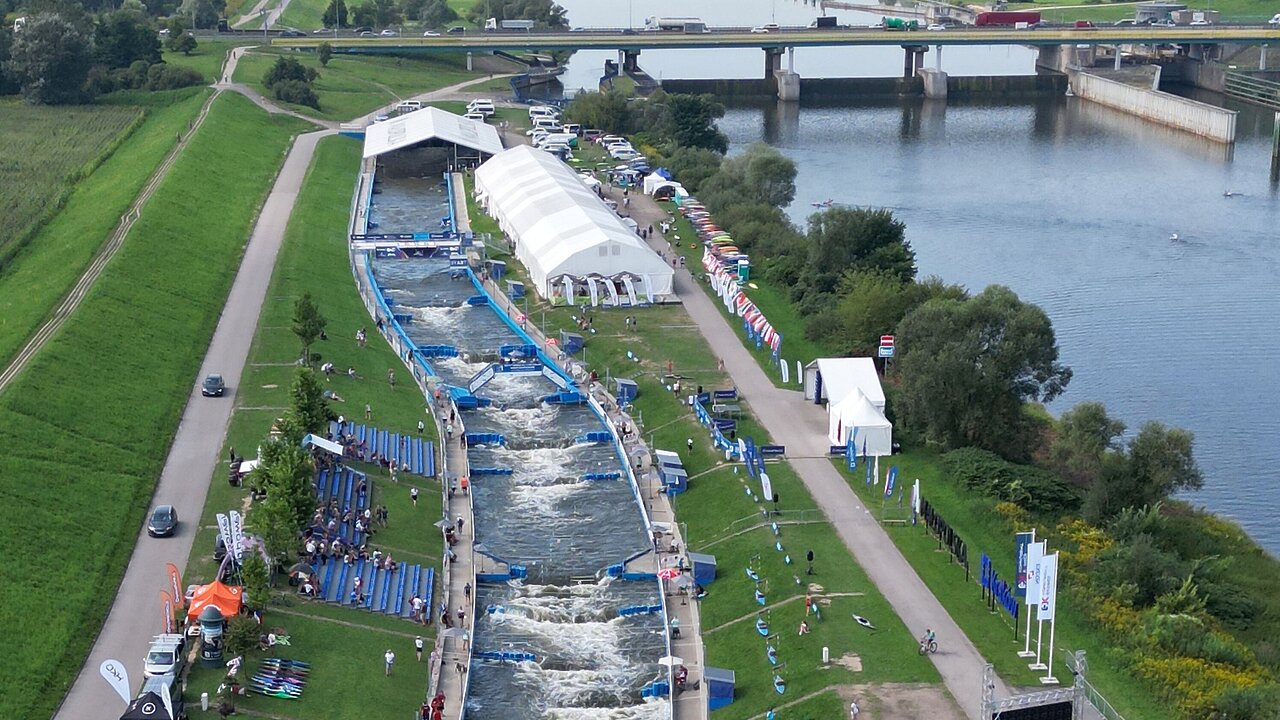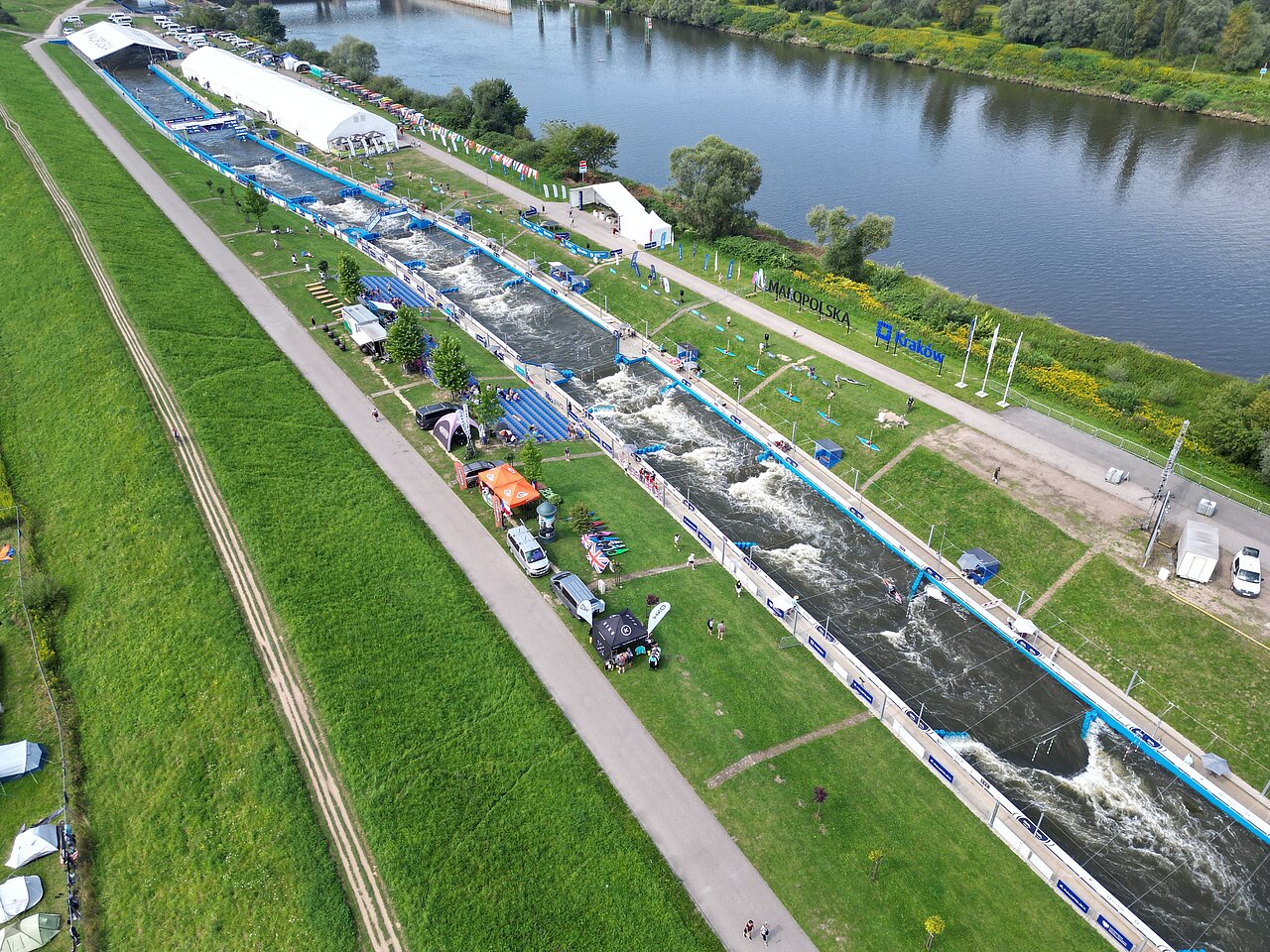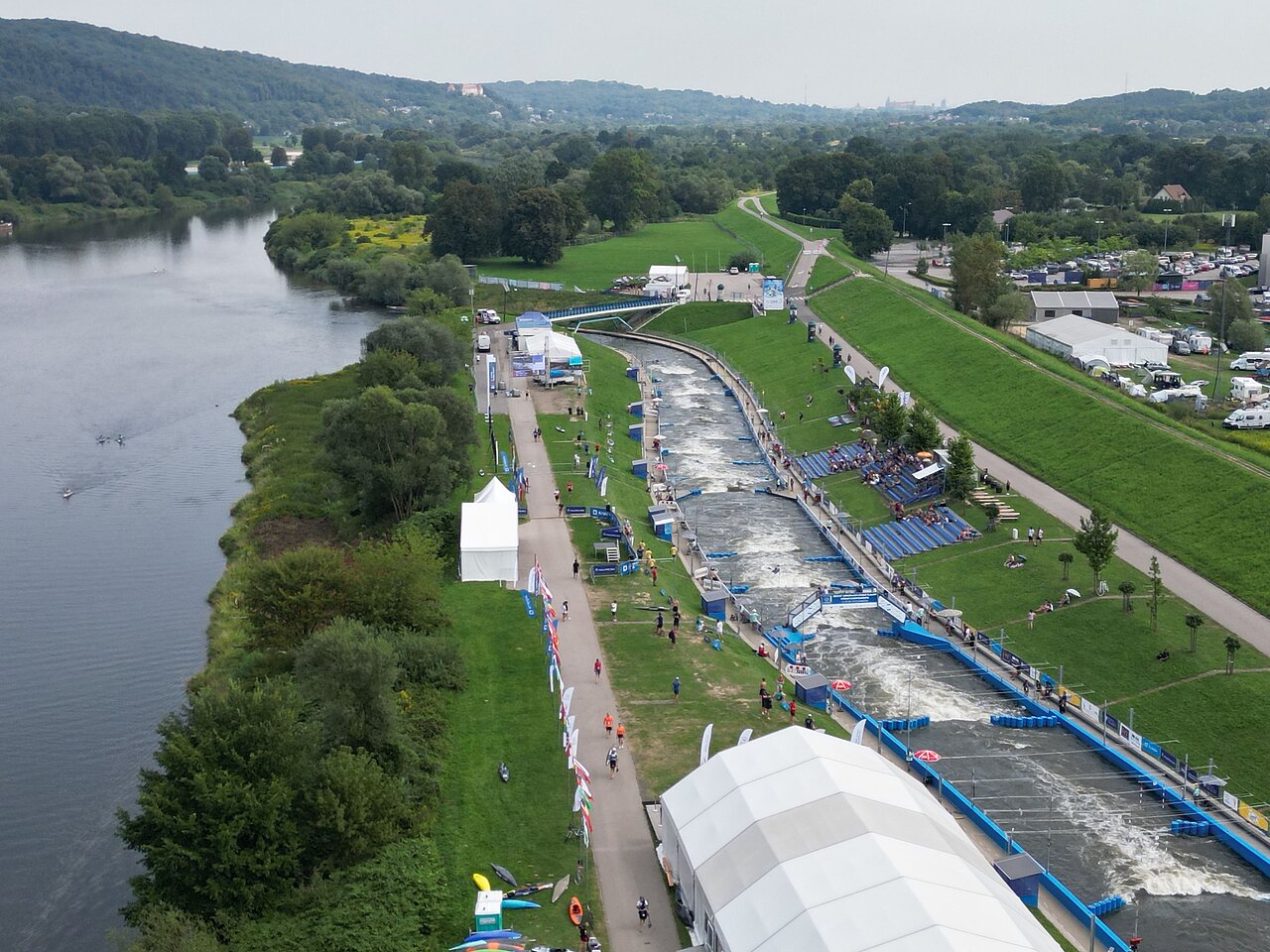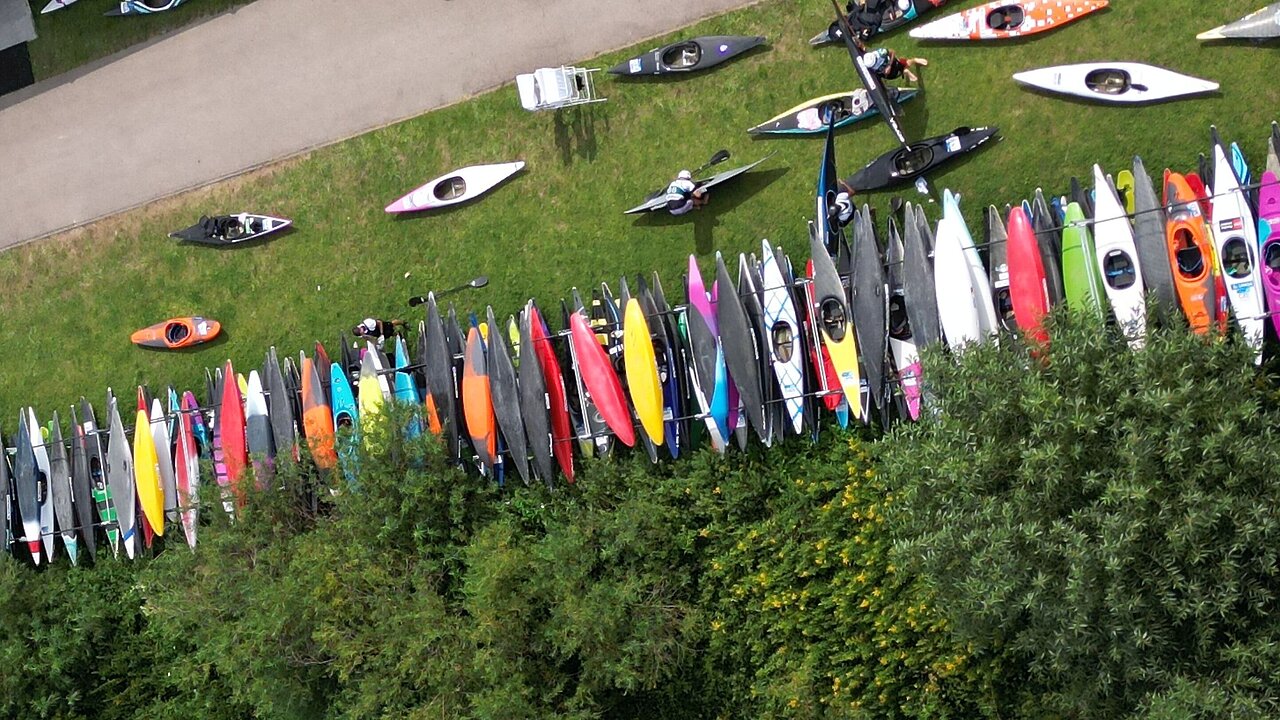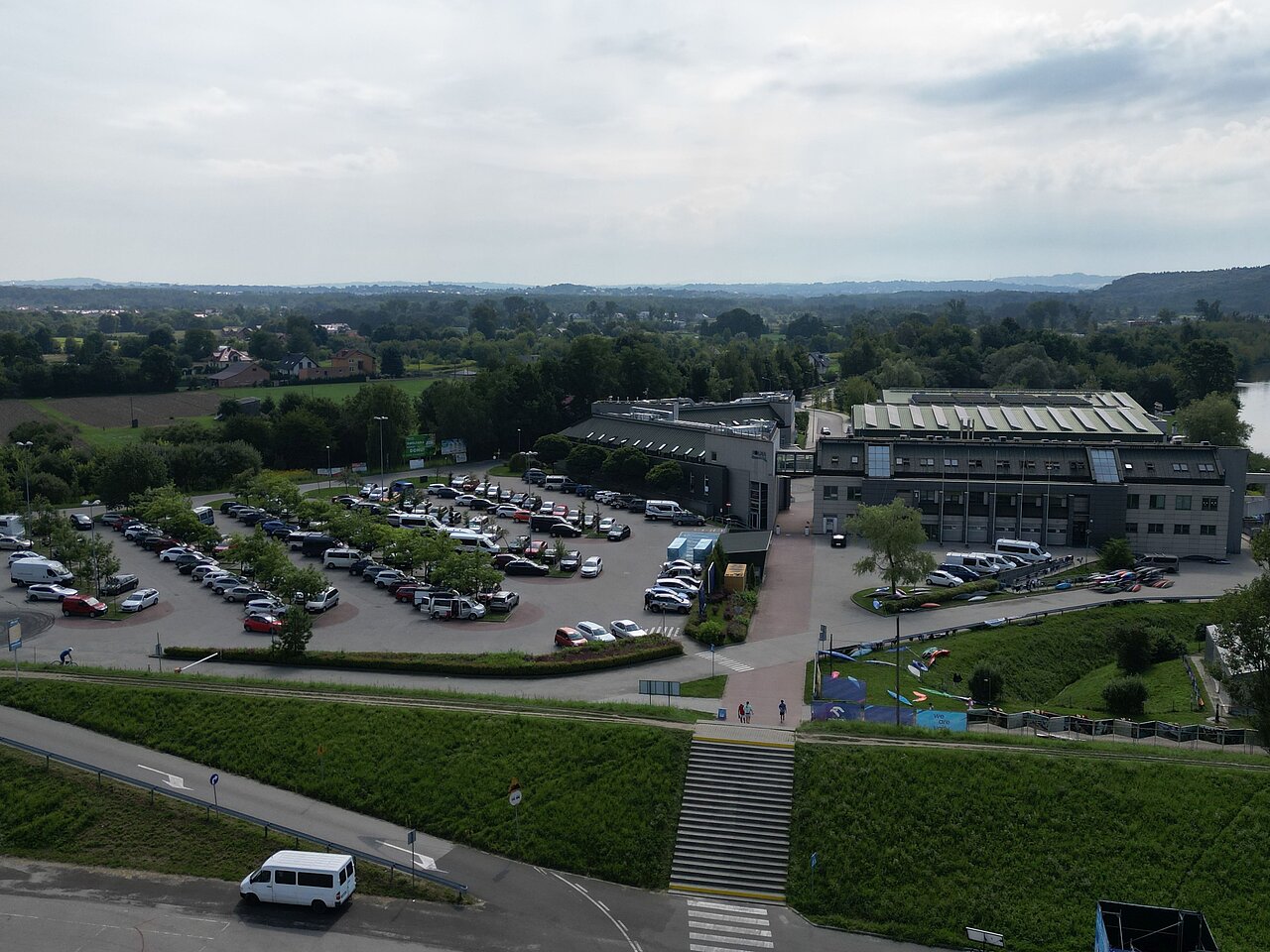Canoe slalom has been an Olympic discipline since the 1972 Olympic Games. The first venue was in Augsburg, on an artificial white water course called the Eiskanal. It was specially designed for this purpose.
This place has lost none of its fascination. Every canoe slalom kayaker knows and loves it. The national squad is trained here at the Olympic base. Training takes place in summer and winter. Despite the good conditions, the athletes have to travel a lot to get to know other white water routes. Every whitewater course has its own peculiarities that you have to master if you want to be internationally successful.
The Canoe Park Markkleeberg is beside the Eiskanal the second canoe slalom performance center in Germany. The competition course is 270 meters long with a height difference of more than 5 meters between the start and finish pool.
The system is fed by the water of Lake Markkleeberg. Six electrical circulating pumps with a total output of approx. 2060 kilowatts and a total volume flow rate of approx. 28 m³ per second pump the water into the starting pool. The water volume of the competition course can be varied between 4 m³/s and 19 m³/s. Depending on the use of the mobile obstacles in the plug-in system, levels up to WW III (difficult) or WW IV (very difficult) can be achieved.
The lake of Markkleeberg was created from a former lignite opencast mine. In the white water course a lot of oxygen comes into the iron-rich water. This is the reason for ist reddish-brown colour.
One of the last natural canoe routes in Europe where competitions are held. It is often used as a venue for German championships and Germany Cup races. Junior World Championships have also taken place here. The Saalach is a wild river that quickly changes its water level and thus its level of difficulty depending on snowmelt and precipitation. Gate poles are only hung for training and competition purposes. Not only the impassable shore terrain on the route itself, but also the fact that the Teufelssteg marks the entrance to the dangerous Teufelsschlucht (Devil's Gorge) requires all participants to pay more attention. When the weather is good, the mountain ambience of the Salzburg Saalachtal is fantastically beautiful.
The Dora Baltea flows comfortably through the Italian town on the edge of the Alps, then wildly through the natural rock course with torrential waves and rollers, with its cold water from the Aosta Valley. The river is fed by the Mont Blanc Glacier. A paradise for canoe slalom enthusiasts. That's why the Italians are obviously strong opponents in international competition.
Water Slalom Ondreja Cibáka
Built in 1978, the artificial canoe route on the Libra River with its beautiful mountain panorama is located between the High and Low Tatras in the Slovakian Carpathians. The course has two unique channels with a gradient of 7.5 meters. The main channel corresponds to whitewater class II-III, while the northern Orava channel with WW III-IV ends in a spectacular drop into the main channel.
A large covered spectator stand and a conveyor belt to the feeder canal offer the best comfort for spectators and canoeists.
Divoká voda Čunovo
The artificial white water course begins with a lock that supplies water to two main channels and a calm preparation course. The newly renovated left main track has been expanded with obstacles and can be connected to the right track multiple times, which allows various combinations of track driving to be achieved. With a flow of 16-20 m3/sec The Danube water flows about 360 m long through the 12-20 m wide canals, overcoming a drop of 7 m. The two canals each end with an outflow back into the river. Canoe slalom is extremely important in Slovakia, so the support from the country, economy and people is great, which can be seen in the well-equipped water park. The Slovakian team of athletes is accordingly well positioned.
The Dora Baltea flows comfortably through the Italian town on the edge of the Alps, then wildly through the natural rock course with torrential waves and rollers, with its cold water from the Aosta Valley. The river is fed by the Mont Blanc Glacier. A paradise for canoe slalom enthusiasts. That's why the Italians are obviously strong opponents in international competition.
The technical part of the route, where driving skills are required, is only 170 meters long. To increase its length to 275 meters, the course will be extended upstream into the lake behind the dam and downstream into the natural flow of the Sava. The upstream overrun means each paddler must start the race with an 8-second flat-water sprint and reach the top of the overflow at maximum speed. This and the usual forward gate at the bottom of the spillway make for a challenging start unlike any other venue in international competition.
This canoe slalom course, which is often used for international competitions, is located on the Vistula. The straight course can be changed at will with obstacles. In order to be able to train in Kraków in winter, too, the upper part of the route up to the kayak cross ramp is covered with a heatable tent.
License code: 3G2TAK90J6EZSWLO
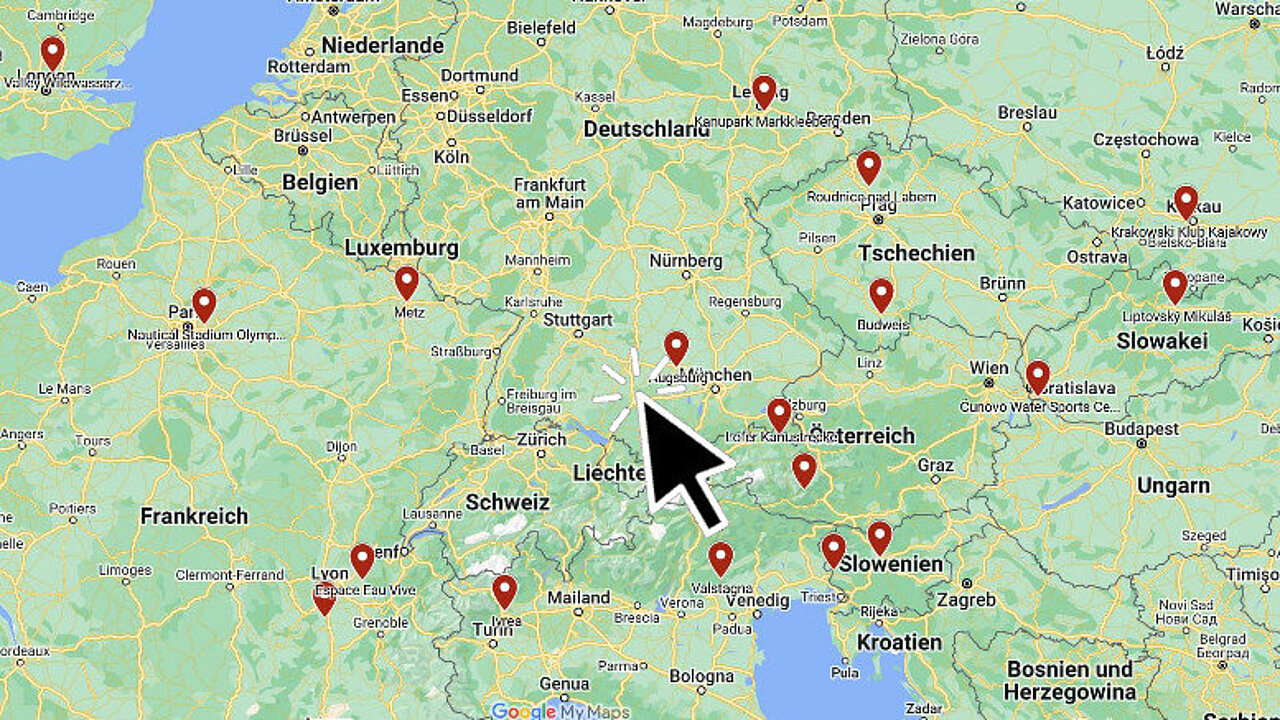
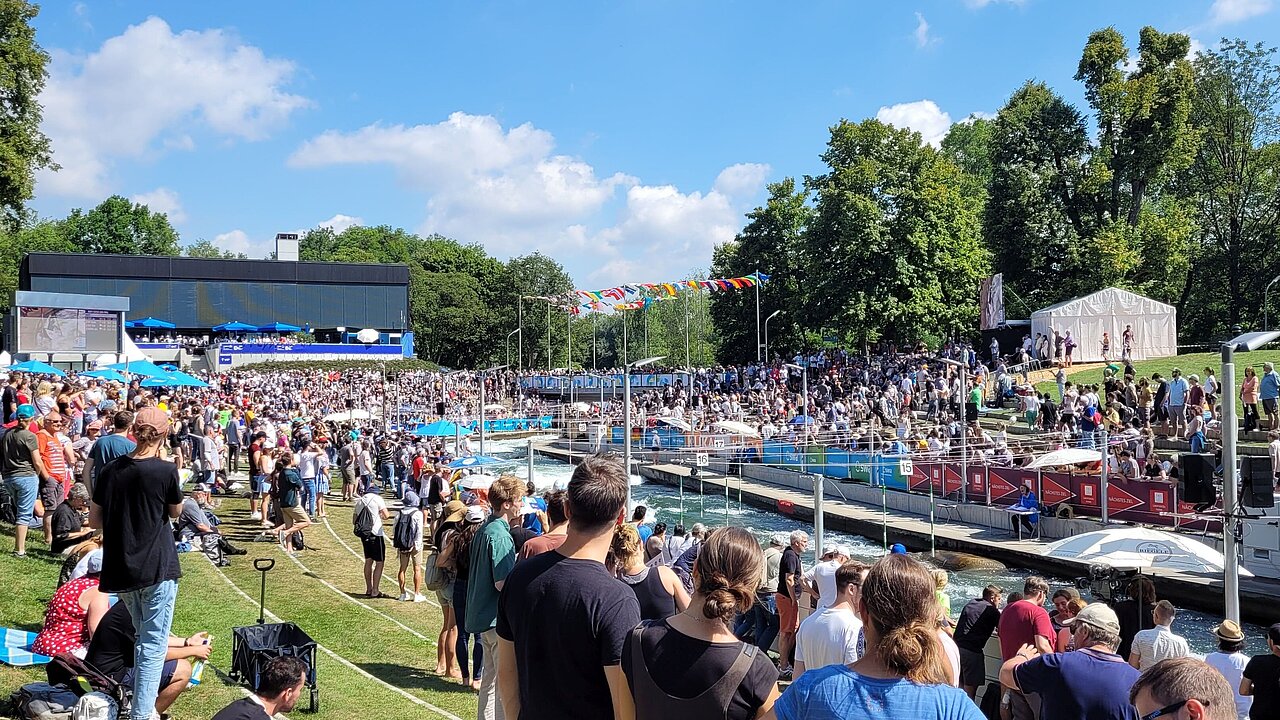
![[Translate to English:] Kanupark_Markkleeberg Canoe Course Markkleeberg](/fileadmin/_processed_/8/3/csm_Kanupark_Markkleberg_quer_47cef64861.jpg)
![[Translate to English:] Kanupark_Markkleeberg](/fileadmin/_processed_/1/5/csm_Kanupark_Markkleeberg_hoch_4fcfec22a0.jpg)
